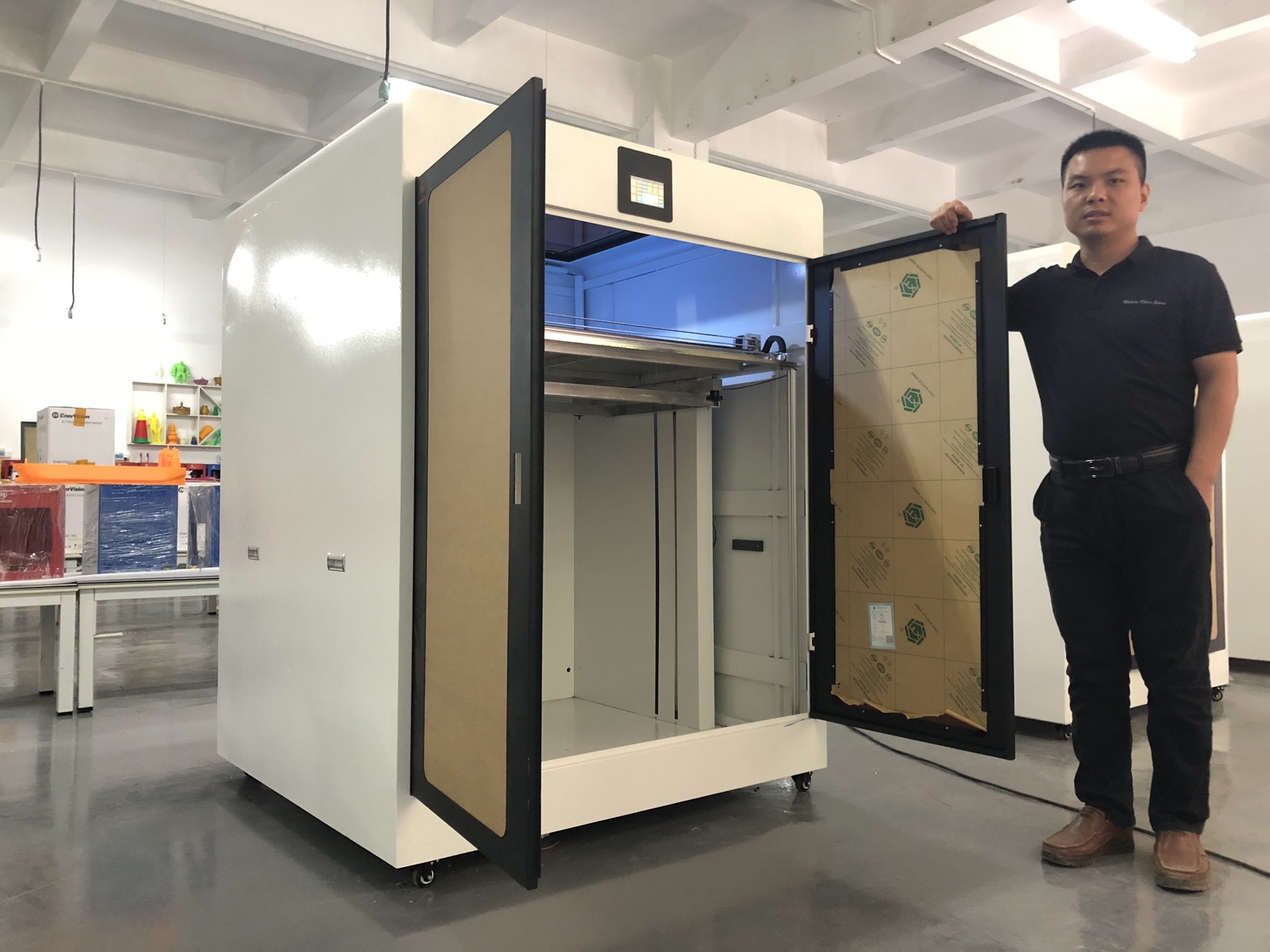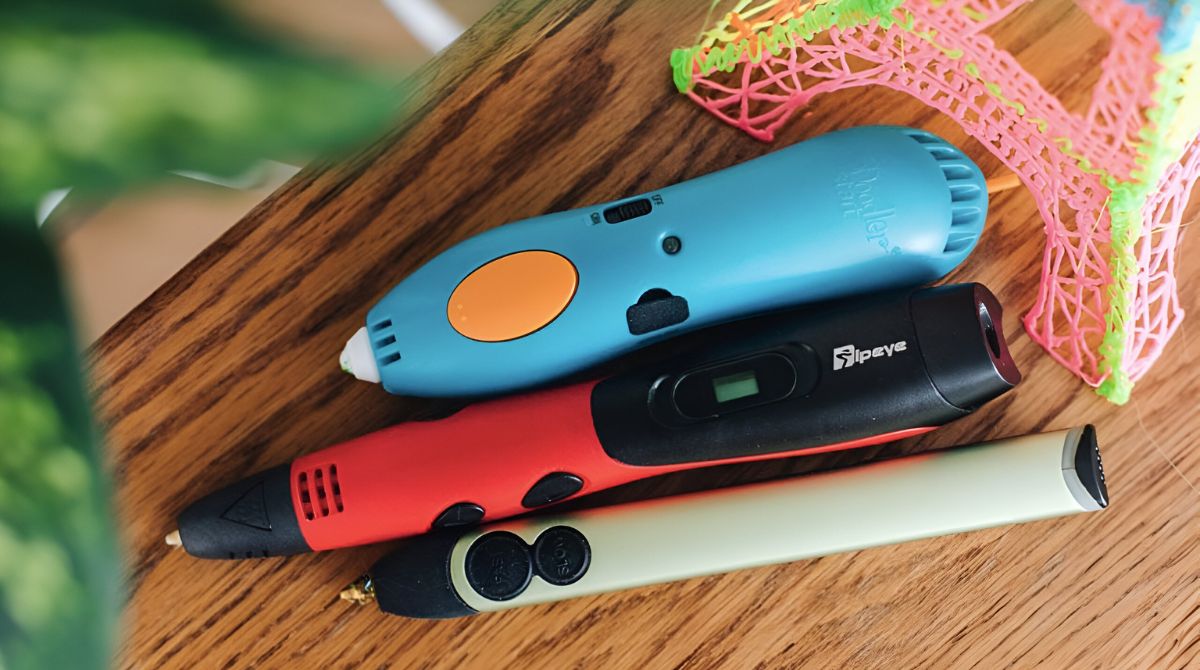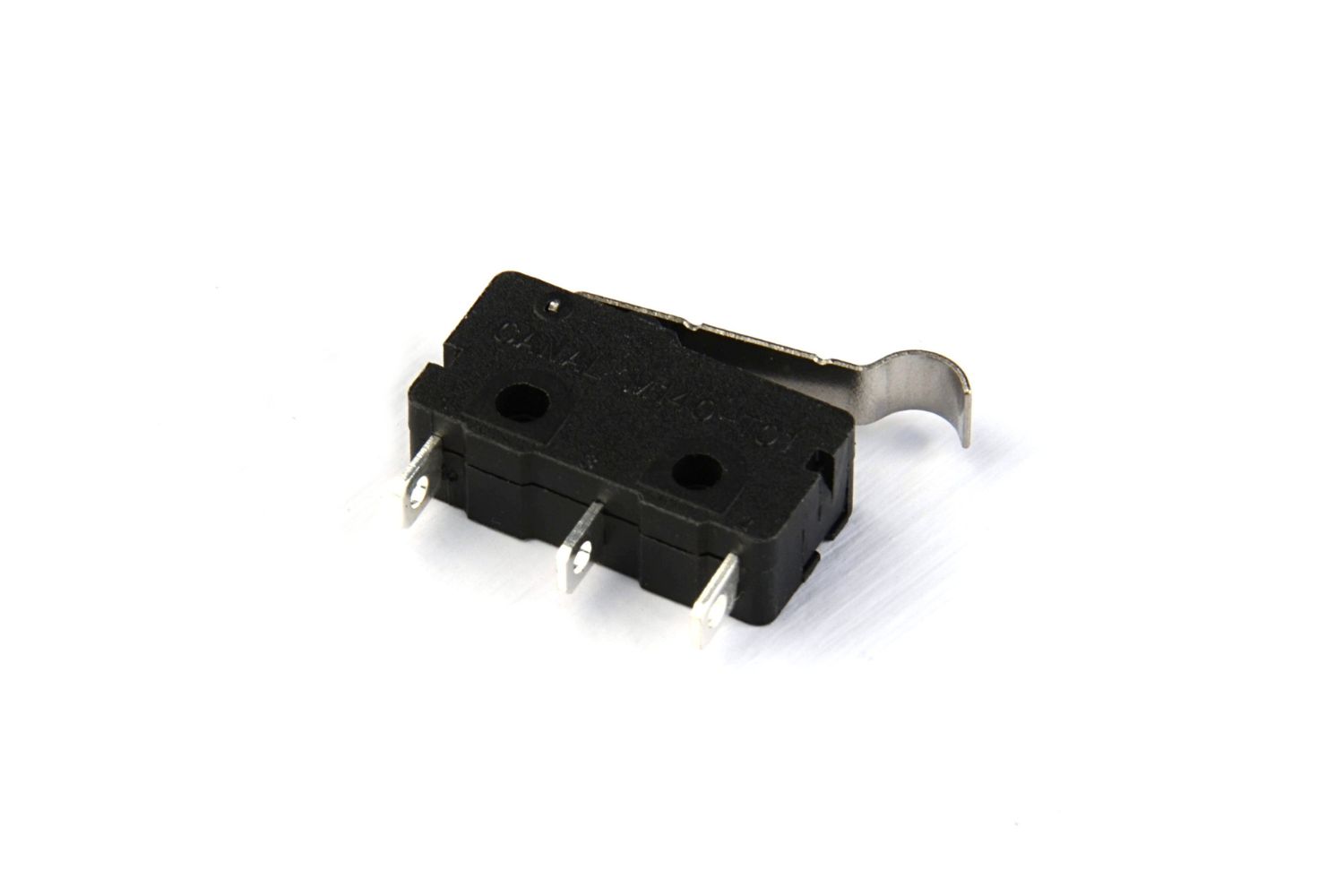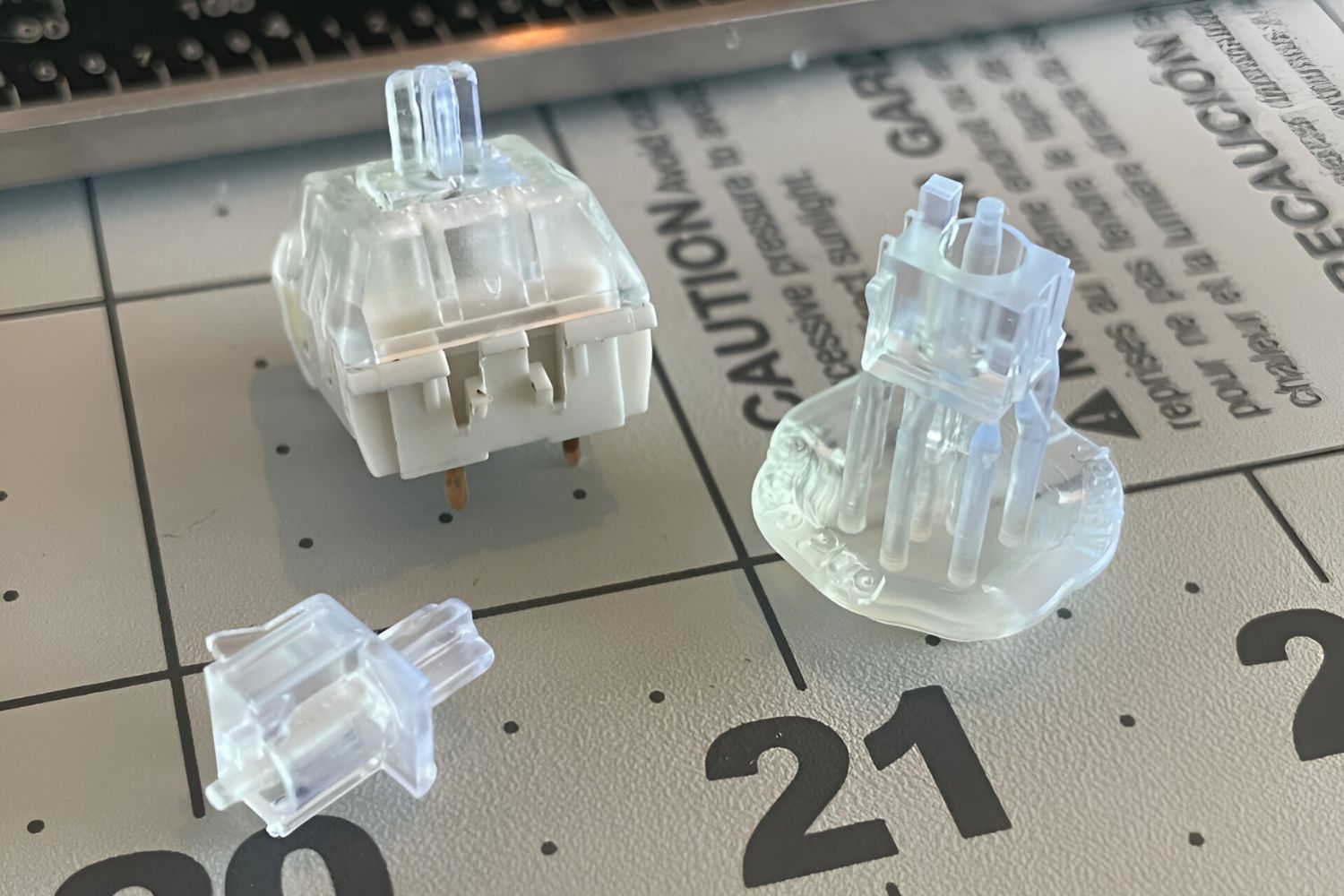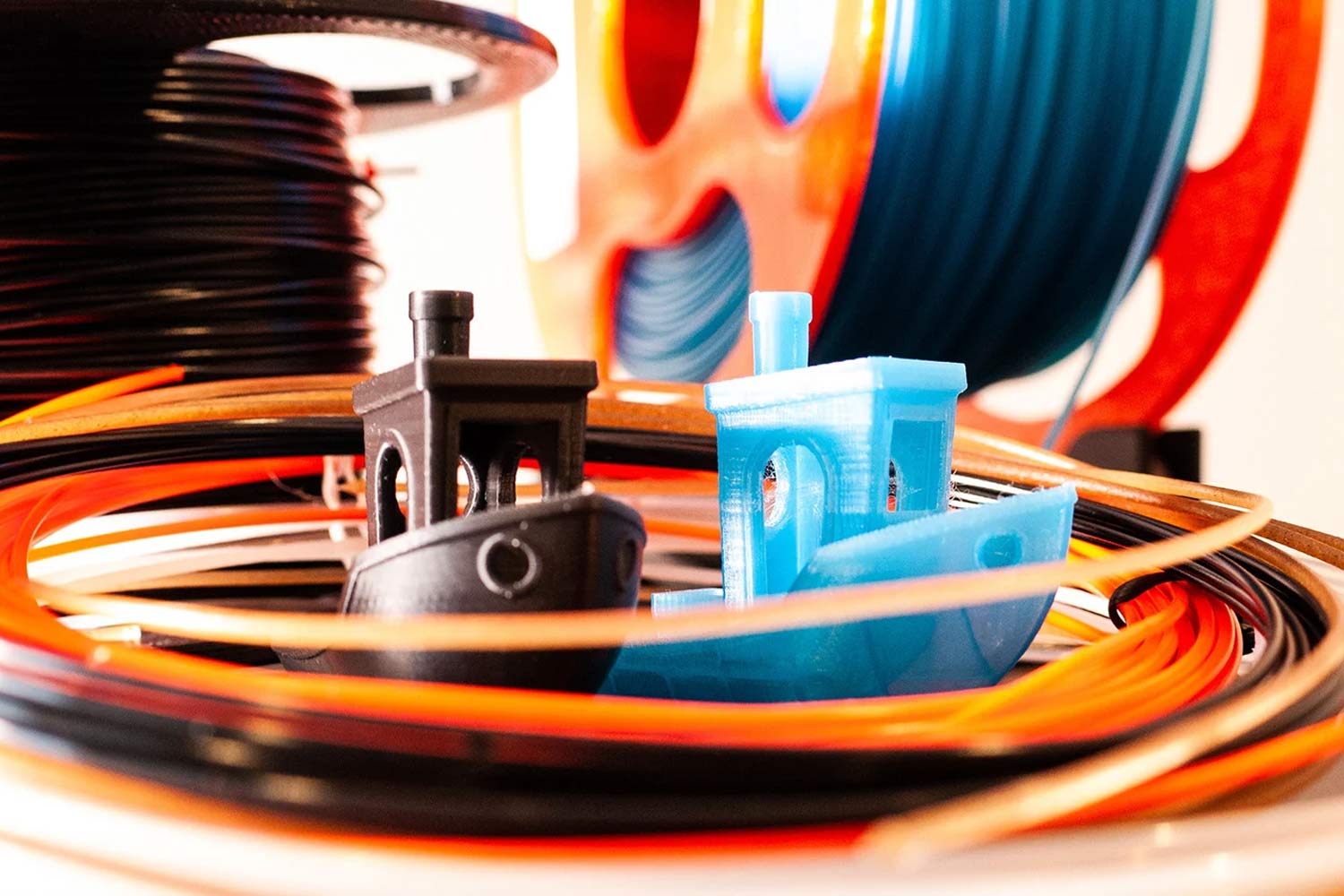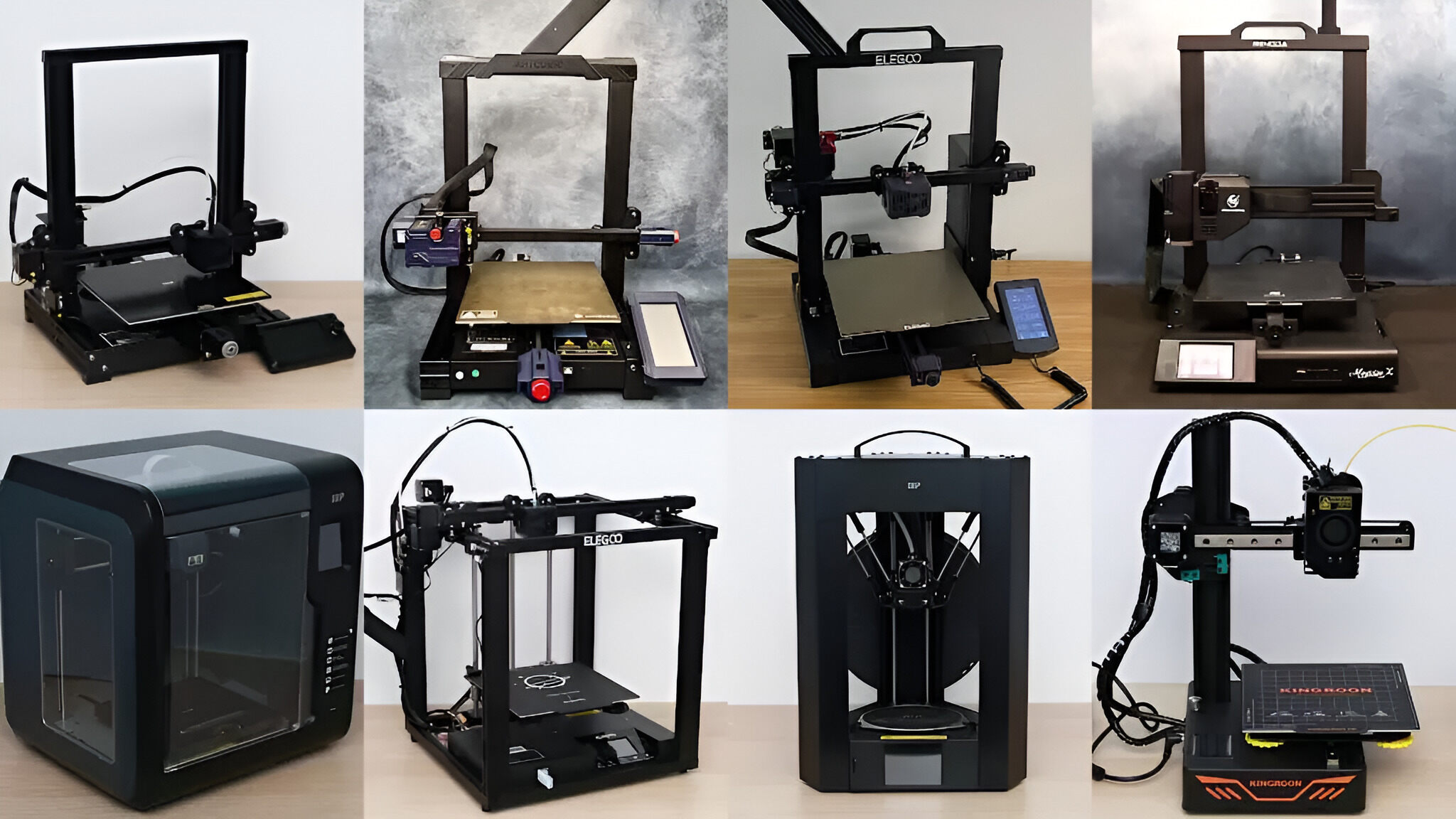Introduction
Welcome to the world of 3D printing! If you’re considering buying a 3D printer, you’re in for an exciting journey of creativity and innovation. 3D printers allow you to bring your imaginations to life by transforming digital models into physical objects. Whether you’re a hobbyist, a designer, an engineer, or just someone with a passion for creating, owning a 3D printer can open up a whole new world of possibilities.
However, with so many options available in the market, choosing the right 3D printer can be a daunting task. There are several factors to consider, including budget, print size, print resolution, filament type, print speed, and more. Each of these factors plays a crucial role in determining the overall performance and capability of the 3D printer.
In this guide, we will explore different aspects of 3D printers to help you make an informed decision. By understanding the key considerations and features, you can select a 3D printer that best suits your needs and preferences. So, let’s delve into the world of 3D printers and find out what type of printer is right for you!
Budget considerations
When it comes to buying a 3D printer, setting a budget is an essential first step. 3D printers come in a wide range of prices, from entry-level models to high-end professional machines. Understanding your budget will help narrow down your options and ensure that you get the best value for your money.
If you’re just starting out or have a limited budget, there are affordable 3D printers available that still offer decent performance and functionality. These budget-friendly printers are ideal for beginners or those looking to explore 3D printing without a significant investment.
On the other hand, if you have a more generous budget, you can opt for higher-end 3D printers that offer advanced features, improved print quality, and a wider range of filament compatibility. These printers often come with additional benefits such as larger build volumes, faster print speeds, and more durable construction.
It’s important to strike a balance between your budget and the features you require. Consider the intended use of the printer and how it aligns with your budget. If you’re a professional or require high-precision prints, investing in a higher-end printer might be worth it. However, if you’re a hobbyist or occasional user, a more affordable printer might suffice.
Additionally, it’s worth considering the long-term costs of owning a 3D printer. Apart from the initial purchase, you’ll also need to factor in the cost of filament, maintenance, and any necessary upgrades or accessories. Research the ongoing costs associated with different printers to ensure that they fit within your budget in the long run.
Remember, while budget is an important consideration, it shouldn’t be the only factor driving your decision. It’s better to invest in a reliable and capable 3D printer that will meet your needs, even if it means stretching your budget slightly.
Print size
One of the crucial factors to consider when buying a 3D printer is the print size or the maximum dimensions of the objects you can print. The print size of a 3D printer is determined by its bed or build plate dimensions, which represent the available space for printing.
The ideal print size for you depends on the types of objects you intend to print. If you plan on printing small models or prototypes, a printer with a smaller build size may be sufficient. However, if you have aspirations of printing larger objects or functional parts, then you’ll need a printer with a larger bed size.
It’s important to note that the actual print size may be slightly smaller than the advertised bed size due to factors like print margin and nozzle clearance. Before purchasing a 3D printer, it’s recommended to check the available print area and ensure it meets your requirements.
Consider the types of projects you wish to undertake and evaluate the dimensions of the objects you will be printing most frequently. This will help determine the minimum print size that will be suitable for your needs.
If you’re uncertain about the print size you require, it’s often better to opt for a printer with a larger build size. This gives you more flexibility and allows you to take on a wider range of projects without limitations. However, keep in mind that larger build sizes typically come with a higher price tag.
Lastly, don’t forget to consider the overall physical dimensions of the printer itself. Ensure that you have enough space available in your workspace to accommodate the printer and provide sufficient ventilation for safe operation.
By considering your specific printing needs and evaluating the available print sizes of different printers, you can select a 3D printer that is well-suited to handle the objects you want to create.
Print resolution
When it comes to 3D printing, print resolution refers to the level of detail and precision that the printer can achieve. It is measured in microns (µm) and represents the thickness of each layer that the printer can print. A lower resolution means finer details and smoother surfaces, while a higher resolution may result in more visible layer lines but faster print times.
The print resolution you need depends on the type of objects you’re planning to print and the level of detail required. If you’re primarily printing small, intricate models or artistic pieces, a printer with a higher resolution would be ideal to capture all the fine details accurately.
On the other hand, if you’re printing larger objects or functional prototypes, a slightly lower resolution might be acceptable. It’s crucial to balance resolution with print speed and the overall purpose of your prints.
It’s important to note that the print resolution is not the only factor that determines the quality of the final print. Factors like the type of filament being used, the slicer software settings, and the printer’s overall accuracy also play a role in achieving high-quality prints.
Furthermore, it’s worth considering that higher resolution prints require more time to complete. If you’re looking to print multiple objects or larger designs, the print time can significantly increase with higher resolutions.
When selecting a 3D printer, review the manufacturer’s specifications and take note of the printer’s maximum resolution capability. Additionally, it may be helpful to seek out sample prints or customer reviews to get a better idea of the printer’s actual print quality.
Remember, while higher resolution printers offer greater detail, they typically come with a higher price tag. Assess your specific needs and budget to find the right balance between resolution and affordability.
By considering the level of detail required for your prints and finding a printer that offers an appropriate resolution, you can ensure that your 3D prints turn out as precise and accurate as you desire.
Filament type
When it comes to 3D printing, the filament type you choose plays a significant role in the quality, strength, and versatility of your prints. Filament refers to the material that is melted and extruded through the 3D printer’s nozzle to create the printed object.
There are several types of filaments available, each with its own unique properties and purposes. The most common filament types include:
- PLA (Polylactic Acid): PLA is a popular choice for beginners and hobbyists due to its affordability and ease of use. It is derived from renewable resources like cornstarch or sugarcane and offers a wide range of colors. PLA is known for its low printing temperature, minimal warping, and a glossy finish.
- ABS (Acrylonitrile Butadiene Styrene): ABS is a durable and impact-resistant filament that is commonly used for functional prints and prototypes. It has a higher printing temperature compared to PLA and can withstand higher temperatures after printing. ABS requires a heated build plate and good ventilation due to its emission of fumes during printing.
- PETG (Polyethylene Terephthalate Glycol): PETG combines the best features of PLA and ABS, offering good strength, flexibility, and ease of printing. It is resistant to temperature, chemicals, and moisture. PETG is suitable for both functional and aesthetic prints and is known for its transparency and clarity.
- TPU (Thermoplastic Polyurethane): TPU is a flexible filament with rubber-like properties. It is used for applications that require flexibility and elasticity, such as phone cases, grips, and wearable accessories. TPU is also known as TPE (Thermoplastic Elastomer) or TPC (Thermoplastic Copolyester).
- Specialty filaments: In addition to the standard filaments mentioned above, there are various specialty filaments available, including wood-filled, metal-filled, carbon fiber, and nylon. These filaments offer unique aesthetic and mechanical properties, but they often require specific printer settings and expertise to achieve optimal results.
When choosing a 3D printer, consider the filament types that are compatible with the printer’s extruder. Some printers may have limitations on the types of filaments they can handle due to factors like nozzle temperature, extruder design, or print bed adhesion requirements.
It’s also crucial to consider the availability and cost of filaments. PLA filaments are typically the most affordable and widely accessible, while specialty filaments may be more expensive and harder to find.
Ultimately, the filament type you choose should align with your intended applications and desired properties of your prints. Understanding the characteristics of different filaments will help you make an informed decision and ensure successful and satisfactory 3D prints.
Print speed
Print speed is an important consideration when selecting a 3D printer. It refers to the rate at which the printer can produce a printed object, typically measured in millimeters per second (mm/s) or centimeters per hour (cm/h).
The print speed of a 3D printer is influenced by various factors, including the complexity of the design, the layer height, and the overall quality settings. Higher print speeds can significantly reduce the time required to complete a print, allowing for faster iteration and production.
However, it’s important to note that increasing the print speed can impact the print quality. Faster print speeds can result in less precise details and potentially introduce issues such as poor layer adhesion, stringing, or warping.
It’s crucial to find the right balance between print speed and print quality based on your specific requirements. If you’re printing functional parts or prototypes that require accuracy and precision, slower print speeds may be necessary to achieve optimal results.
Additionally, keep in mind that the print speed can vary depending on the complexity of the print. Prints with intricate details or complex geometries may require slower speeds to ensure accurate reproduction.
Some 3D printers offer adjustable print speed settings, allowing you to customize the speed based on your individual needs. This flexibility can be useful for optimizing the print time while maintaining suitable print quality.
Ultimately, the appropriate print speed for your needs will depend on the balance between speed and quality. Assess your printing requirements and evaluate the print speeds offered by different printers to find the optimal choice that suits your specific needs.
Open vs closed frame
When considering a 3D printer, one aspect to examine is whether it has an open or closed frame design. The frame of a 3D printer refers to the structure that holds the moving parts and components together. The choice between an open or closed frame can have implications on the printer’s performance, safety, and versatility.
Open frame 3D printers have a structure that is exposed, with minimal or no enclosure surrounding the printer. These printers offer easy access to the print area, which makes it convenient for monitoring and adjusting prints. Additionally, they typically have excellent ventilation, which can aid in the dissipation of heat, especially when printing with high-temperature filaments like ABS.
On the other hand, closed frame 3D printers are enclosed structures with sides and often a front door. The enclosure provides a controlled environment with regulated temperature and less external interference, which can improve print quality, especially for materials that are sensitive to temperature fluctuations.
The choice between an open or closed frame largely depends on the intended use and the environment in which the printer will be situated. Here are a few considerations to help you make a decision:
- Print environment: If you plan on printing with high-temperature materials like ABS or PETG, a closed frame can help maintain a stable temperature and prevent drafts that can affect print quality. However, if you primarily print with materials like PLA that don’t require specific temperature control, an open frame may be more suitable.
- Noise and ventilation: Closed frame printers tend to be quieter due to the enclosure, making them a better choice for home or office use. Also, if noise and odor control are important considerations for you, a closed frame printer can help contain both.
- Print safety: With an open frame printer, there is a potential risk of accidental contact with moving parts or hot components. Closed frame printers offer more protection, particularly if you have children or pets in your household.
- Accessibility: Open frame printers are easier to access when performing maintenance, changing filament, or making adjustments during a print. If you value convenience and ease of use, an open frame printer may be preferable.
Ultimately, the decision between an open or closed frame 3D printer boils down to personal preference and specific requirements. Evaluate the trade-offs and consider how each type aligns with your environment, printing materials, and usage preferences to select the most suitable option.
Single vs dual extruder
When choosing a 3D printer, one important consideration is whether it has a single or dual extruder configuration. The extruder is the component responsible for melting and depositing the filament during the printing process. Understanding the difference between a single and dual extruder setup can help you determine which option is best suited for your printing needs.
A single extruder printer has only one extruder, meaning it can print with a single filament at a time. This is the most common configuration and is suitable for most general 3D printing applications.
A dual extruder printer, as the name suggests, has two extruders. This allows for the simultaneous use of two different filaments or colors during a print. This configuration offers several advantages, including:
- Multi-color prints: With a dual extruder printer, you have the ability to create prints with multiple colors or use different filaments to achieve contrasting effects. This is particularly useful for artistic or visually appealing prints.
- Soluble support structures: Dual extruder printers can utilize one filament as the main material and another filament that is soluble in water or a specific solvent as a support material. This simplifies the removal of support structures as the soluble material can be dissolved, leaving behind the clean print.
- Dual material prints: Having two extruders enables the printing of objects with different properties or materials. For example, you can combine a flexible filament with a rigid filament in a single print to create parts with varying characteristics.
- Reduced printing time: Dual extruder printers can also improve printing efficiency by reducing the time required for filament changeovers. This can be beneficial when printing designs that require different colors or materials in specific sections.
However, it’s important to note that dual extruder printers can be more complex to calibrate and operate compared to single extruder printers. They may require more precise alignment to ensure both extruders are properly coordinated during printing.
Consider your specific printing needs and evaluate whether the added capabilities of a dual extruder printer align with the type of prints you wish to create. If you primarily print single-color or single-material objects, a single extruder printer may be sufficient. However, if you desire the flexibility and creative possibilities offered by multi-color and multi-material prints, a dual extruder printer may be a worthwhile investment.
Ultimately, the choice between a single or dual extruder printer depends on your requirements, project complexity, and the level of versatility you desire.
Ease of use
When selecting a 3D printer, considering its ease of use is essential, especially if you are new to 3D printing or prefer a more user-friendly experience. The level of user-friendliness can vary across different printers, and this factor can greatly impact your overall satisfaction and success with your prints.
Here are some aspects to consider when evaluating the ease of use of a 3D printer:
- Assembly: Some 3D printers come as DIY kits that require assembling various components, while others come pre-assembled and ready to use out of the box. If you prefer a hassle-free setup process, a pre-assembled printer would be a better choice.
- Bed leveling and calibration: Proper bed leveling and calibration are crucial for achieving good print quality. Some printers offer automated bed leveling or assisted calibration features, simplifying the setup process and ensuring optimal printing conditions.
- User interface: Consider the user interface of the printer, including the control panel, display, and menu navigation. A user-friendly interface with intuitive controls and clear instructions can greatly simplify the operation and configuration of the printer.
- Software compatibility: Evaluate the software compatibility of the printer. Check if it supports widely used slicer software packages and if the printer manufacturer provides user-friendly software or firmware updates that are easy to install and use.
- Accessibility and user support: Look into the availability of user manuals, guides, tutorials, and online communities for the specific printer model. This can greatly assist you in troubleshooting issues, learning new techniques, and gaining valuable insights from other users.
- Maintenance and troubleshooting: Consider the level of maintenance required for the printer and how easily you can troubleshoot common issues. Look for printers that offer clear documentation and customer support to aid you in resolving any potential problems.
Ultimately, the level of ease of use that you require will depend on your experience with 3D printing and your personal preferences. If you are just starting out or prefer a more straightforward printing process, a printer with a high ease of use factor is recommended.
However, keep in mind that as you gain more experience and knowledge, you may become more comfortable with more complex setups and processes. It’s important to find a balance between ease of use and the features and capabilities you desire in a 3D printer.
By carefully considering the ease of use factors mentioned above, you can choose a 3D printer that aligns with your comfort level, enabling you to enjoy a smoother and more user-friendly printing experience.
Software compatibility
When selecting a 3D printer, it’s crucial to consider its software compatibility. The software used to control and prepare models for 3D printing can greatly affect your workflow and the overall success of your prints. Understanding software compatibility ensures seamless integration between your preferred software and the printer, allowing you to easily translate your digital designs into physical objects.
Here are some key aspects to consider when evaluating software compatibility for a 3D printer:
- Slicer software: The most important piece of software for 3D printing is the slicer. Slicer software takes your 3D model and generates the instructions that the printer needs to create the physical object. Ensure that the printer you choose is compatible with popular slicer software such as Ultimaker Cura, PrusaSlicer, or Simplify3D. This compatibility ensures you have a wide range of options for preparing and optimizing your 3D models.
- File formats: The 3D printer should support the common file formats used in the industry, such as STL, OBJ, or STEP. Compatibility with these file formats allows for easy import and processing of models created in various 3D modeling software.
- Firmware updates: Check if the printer manufacturer provides regular firmware updates for the printer. These updates not only enhance the printer’s performance and capabilities but also ensure long-term compatibility with the latest software and technologies.
- Open-source vs proprietary software: Consider whether the printer supports open-source software or if it requires proprietary software provided by the manufacturer. Open-source software often provides greater flexibility, enabling you to customize settings and optimize printing parameters. Proprietary software, on the other hand, may come with a more user-friendly interface tailored specifically to the printer’s features and functionality.
- User community and support: Research the availability of user communities, forums, or online resources dedicated to the specific printer model. These communities can provide valuable insights, troubleshooting tips, and solutions for any software-related challenges you may encounter.
Ensuring software compatibility is essential for a seamless and efficient 3D printing experience. It allows you to work with familiar software tools while taking advantage of the printer’s unique features and capabilities.
Before making a final decision, thoroughly research the software compatibility of the printer and read customer reviews to gain insights into the user experience with the specific software and its integration with the printer.
By selecting a printer with good software compatibility, you can optimize your workflow and maximize the potential of your 3D prints, making your overall experience more enjoyable and productive.
Noise levels
Noise levels are an important consideration when choosing a 3D printer, especially if you plan to use it in a home or office environment where noise can be a potential disturbance. Understanding the noise produced by a 3D printer allows you to select a printer that aligns with your noise tolerance and the noise restrictions in your surroundings.
Here are a few factors to consider when evaluating the noise levels of a 3D printer:
- Motion system: The type of motion system used in the printer can affect the noise levels. 3D printers with more advanced motion systems, such as linear rails or quieter stepper motors, tend to generate less noise compared to printers with basic or older-style motion systems.
- Fans and cooling: The cooling fans used in a 3D printer play a significant role in dissipating heat generated by the extruder and other components. Fans that are designed for quiet operation can help reduce overall noise levels. Look for printers that advertise quiet or silent fans for a quieter printing experience.
- Enclosure: An enclosed printer can help reduce noise by dampening the sound generated during the printing process. The solid walls of the enclosure block some of the noise from escaping, making it a good option for noise-sensitive environments.
- Printer location: Consider where you plan to place the printer and how the noise may impact your surroundings. If you’re placing the printer in a shared workspace or near living areas, opting for a quieter printer can help minimize disruption.
It’s important to note that despite efforts to reduce noise, all 3D printers produce some level of sound during operation. The noise generated can vary depending on factors like print speed, print settings, and the specific brand or model of the printer.
When researching printers, look for information on noise levels provided by the manufacturer or in customer reviews. This can give you an idea of the noise produced when the printer is in use.
If noise is a significant concern for you, it may be worth considering noise reduction measures such as placing the printer in an enclosure or using additional sound-dampening materials.
By considering the noise levels and understanding how they align with your requirements and location, you can select a 3D printer that offers a satisfactory balance between performance and noise reduction, ensuring a more comfortable and peaceful printing experience.
Customer support and warranties
When purchasing a 3D printer, it’s important to consider the level of customer support and the warranties offered by the manufacturer. Ensuring that you have access to reliable customer support and a comprehensive warranty can provide you with peace of mind and support in case any issues arise with your printer.
Here are some factors to consider regarding customer support and warranties:
- Technical assistance: Evaluate the availability of technical support provided by the printer manufacturer. Determine if they offer direct customer support through email, phone, or live chat, and the hours of availability. Good customer support ensures that you can seek assistance and guidance when facing any technical challenges or questions.
- Online resources: Check if the printer manufacturer provides online resources such as user manuals, troubleshooting guides, or video tutorials. These resources can be invaluable in helping you better understand the printer’s features and resolving any common issues that may arise.
- Community forums: Look for online communities or forums dedicated to the specific printer model or brand. These forums can be a valuable resource for troubleshooting, sharing tips, and connecting with other users who may have encountered similar challenges.
- Warranty terms: Understand the warranty terms and length offered by the manufacturer. The warranty should cover any defects in materials or workmanship during a specified period. Additionally, familiarize yourself with any specific conditions or limitations outlined in the warranty, such as exclusions for misuse or unauthorized modifications.
- Extended warranties: Some manufacturers may offer the option to purchase extended warranty coverage beyond the standard warranty period. Consider whether investing in an extended warranty is worthwhile for your specific requirements and the anticipated lifespan of the printer.
- Return policy: Familiarize yourself with the manufacturer’s return policy in case you encounter any irreparable issues with the printer. Understand the conditions for returning the printer and the associated costs, if any.
Researching customer reviews, checking online forums, and reaching out to current owners of the printer can provide valuable insights into the actual level of customer support provided by the manufacturer.
Remember that reliable customer support and a comprehensive warranty can greatly enhance your overall experience with the printer and provide you with the necessary assistance and protection in case of any unforeseen issues.
Prioritize printers that come with reputable customer support and warranties, ensuring that you have the necessary resources and coverage to address any potential concerns that may arise during your ownership of the 3D printer.
Conclusion
Choosing the right 3D printer involves considering various factors and balancing your specific needs and preferences. By evaluating aspects like budget, print size, print resolution, filament type, print speed, frame type, extruder configuration, ease of use, software compatibility, noise levels, and customer support, you can make an informed decision that aligns with your requirements.
Begin by setting a budget and understanding the level of investment you’re willing to make. Consider the size of the prints you intend to create and ensure that the printer’s build volume can accommodate your projects. Pay attention to the print resolution to ensure that it fits your desired level of detail and precision.
Additionally, select a printer that supports the filament types you plan to use, whether it’s PLA, ABS, PETG, or specialty materials. Consider the print speed and decide what balance works best for you between speed and print quality.
Decide whether an open or closed frame design is suitable for your environment and printing requirements. Evaluate whether a single or dual extruder configuration would enable you to achieve the designs and functionalities you desire.
Take into account the ease of use of the printer, including assembly requirements, user interface, software compatibility, and available customer support and resources. If noise levels are a concern, opt for printers with quieter motion systems, fans, or enclosed designs.
Lastly, assess the level of customer support provided by the manufacturer and carefully review the warranties and return policies. Having access to technical assistance, online resources, and a reliable warranty can greatly enhance your overall experience as a 3D printer owner.
Ultimately, the ideal 3D printer for you will depend on your unique needs, preferences, and budget. Consider and weigh all the factors mentioned in this guide to make an educated decision that will bring your 3D printing aspirations to life.









